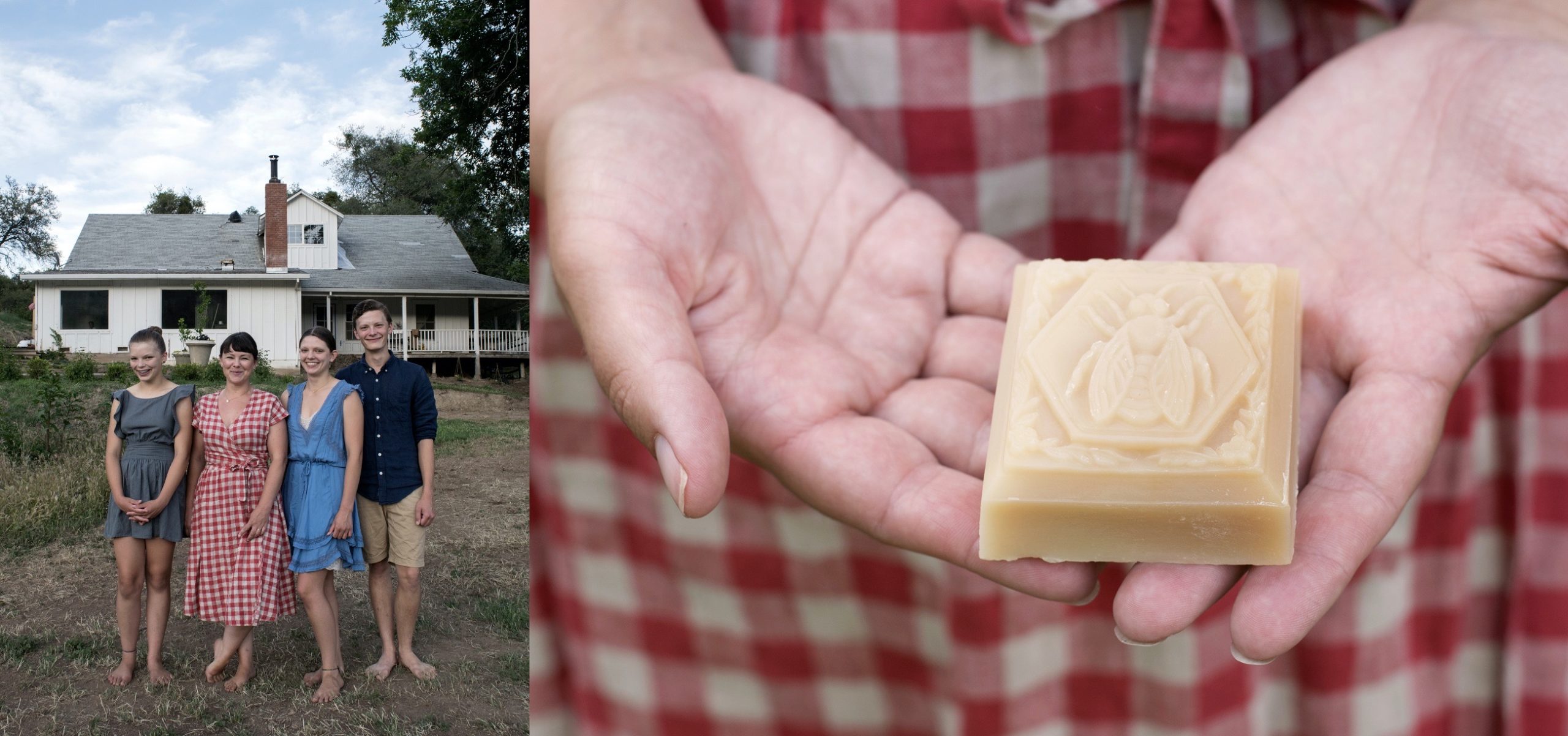Written & photographed by Sarah Lillegard
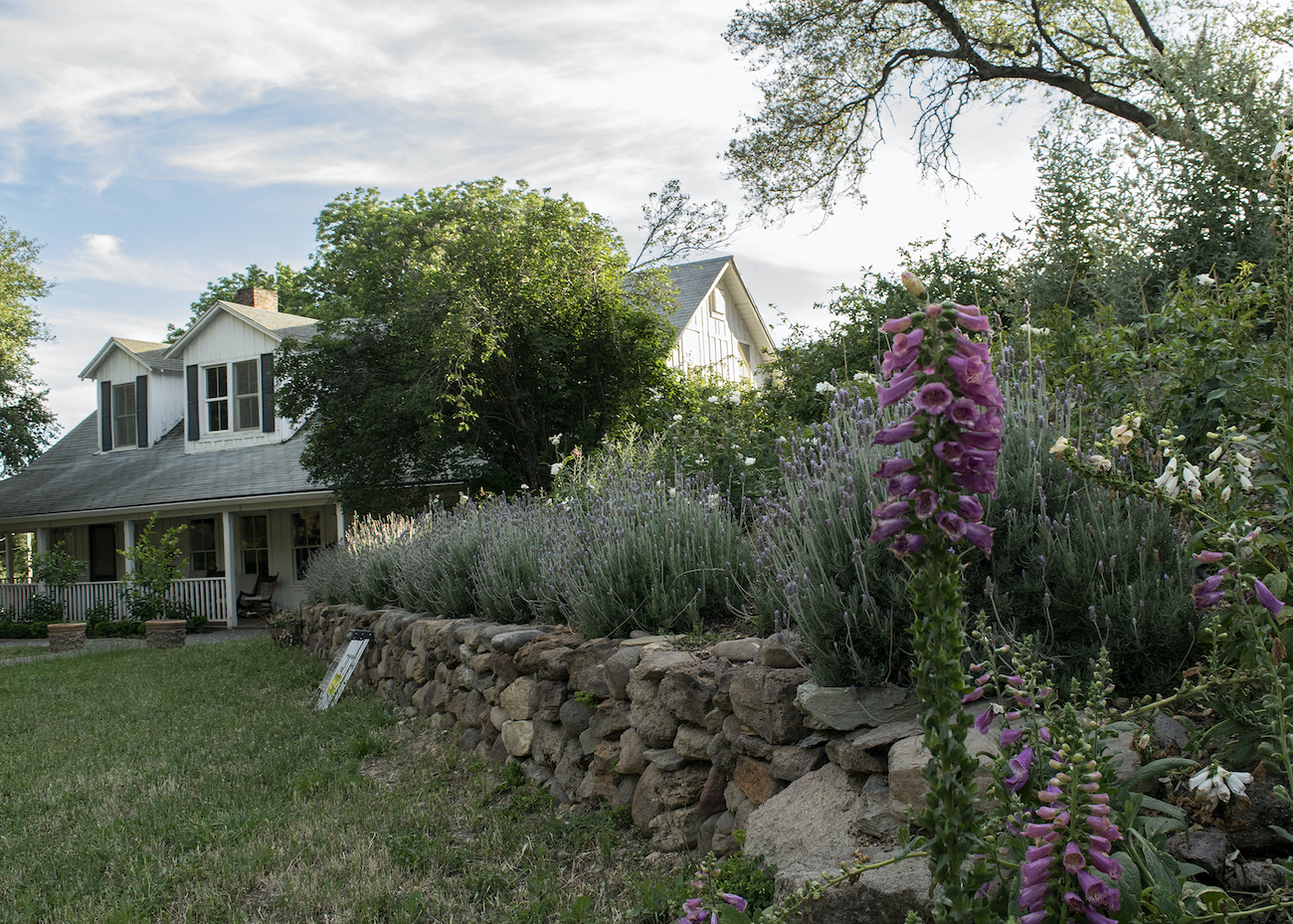
Off the highway and along a dirt road in Butte Valley, California there is a large white house with a wraparound porch sitting at the front of forty acres. This house was built in 1860 and is now home to the Larson family and their farm business named for the prosperity of the land and the year the house was built: Milk & Honey 1860.

Elizabeth, David, and their six children: Aidan, Isabella, Sofia, Amelia, Ethan, and Havilah made this property their home five years ago. Abandoned and surrounded by dead trees and overgrowth, Elizabeth says their first impression was that of a haunted house. Weighing heavily on their decision-making was not only that impression, but also the costs and lifetime of work the property would ask of them. But with Elizabeth’s penchant for autodidactic learning and David’s knowledge as a finishing carpenter, they made the commitment and moved the family from Chico, CA to Butte Valley.
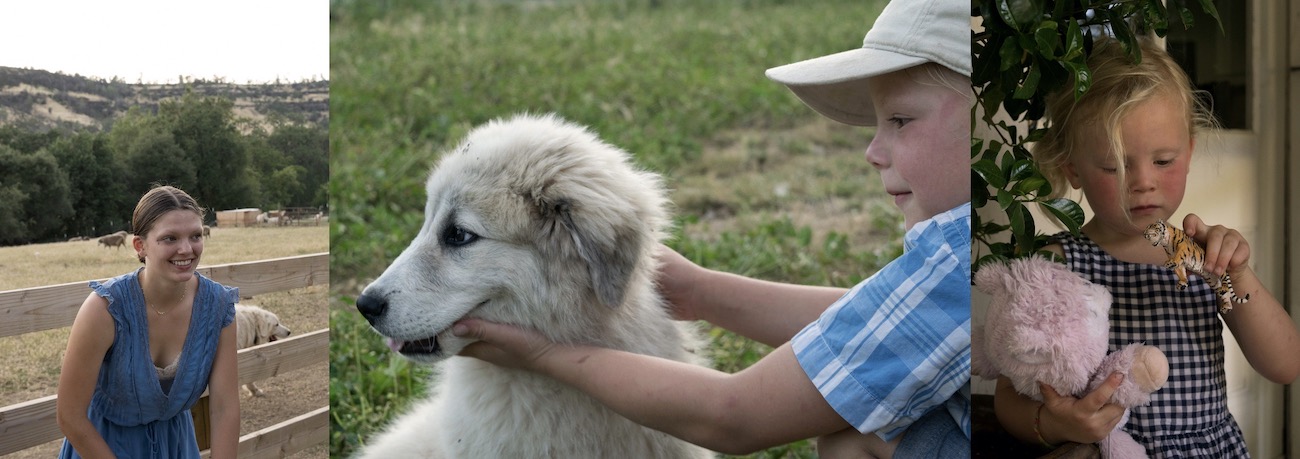
Now along with the Larson family, Milk & Honey 1860 is home to livestock, a newly planted orchard, a vegetable garden, and the only registered Leicester Longwool flock in the state. This luster longwool breed was developed in England in the mid-1700s. The breed’s ability to “up breed” or improve other stock made it highly desirable throughout Europe and America. But by the 1900s, Leicester Longwool had almost disappeared as fine wool sheep like Merinos and Rambouillets gained popularity. In 1990, the Colonial Williamsburg Foundation reintroduced the longwool breed into North America. While there are now a number of conservation flocks, like the one at Milk & Honey 1860, Leicester Longwool sheep and White Holland turkeys are listed as threatened by The Livestock Conservancy.
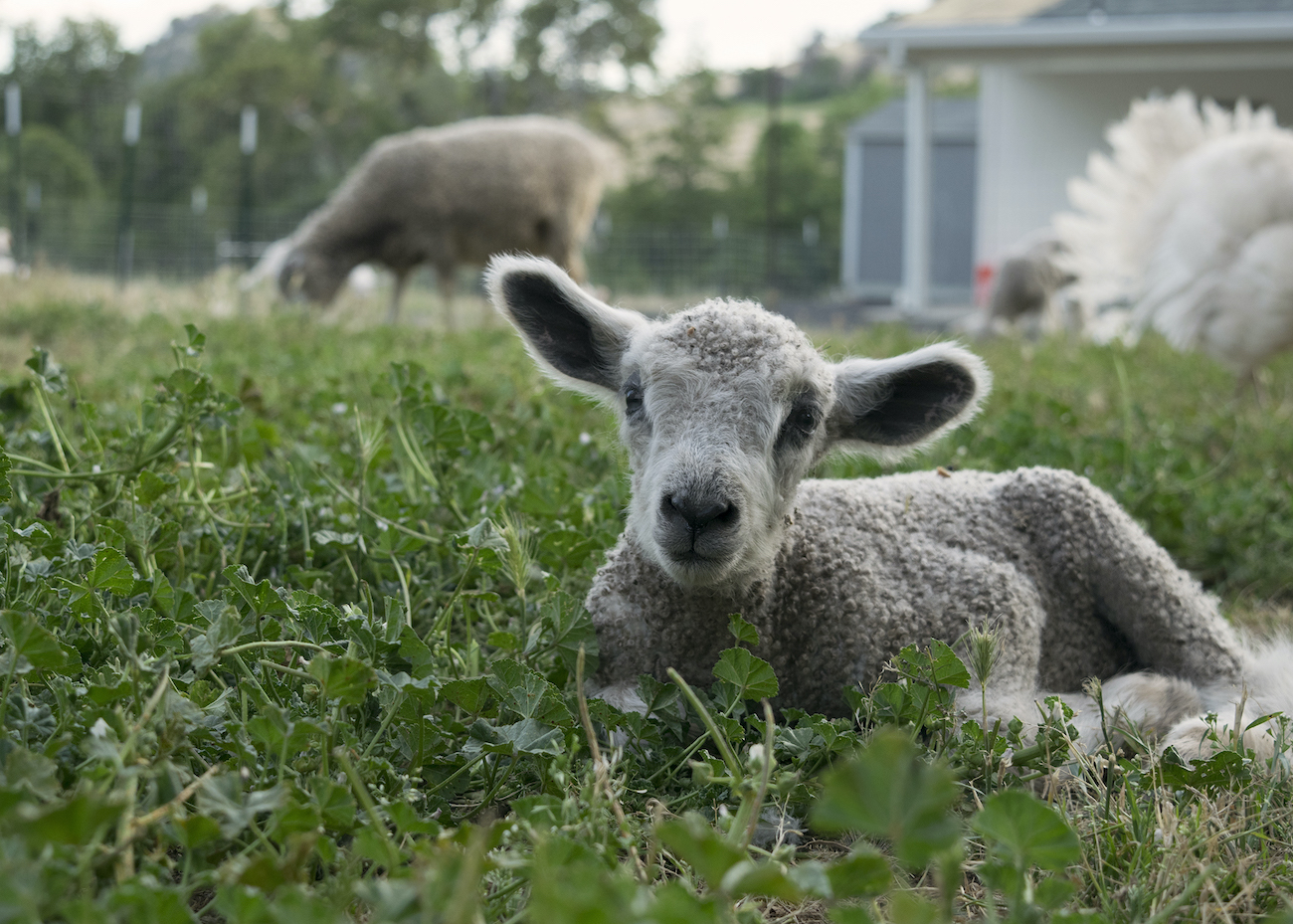
For Elizabeth, the history of the Leicester Longwool is not just context for raising this breed, but the motivation. She believes in taking a holistic approach to preserving “the traditional things that have been lost”. For animal husbandry, this means working primarily with heritage breeds supported through The Livestock Conservancy. In addition to the Leicester Longwool, Milk & Honey 1860 stewards Teeswater sheep. For poultry, they have Alysbury ducks, Sebastopol geese, and an assortment of chickens. While helping to maintain gene diversity through heritage breeds is admirable, Elizabeth is quick to point out that there’s still the critical component of “where the rubber meets the road”. As a family and a farm, they are concerned not just with land sustainability, but with life and financial sustainability as well. For the sheep, their feasibility has grown to include selling fleeces, yarn, roving, and knitted goods.
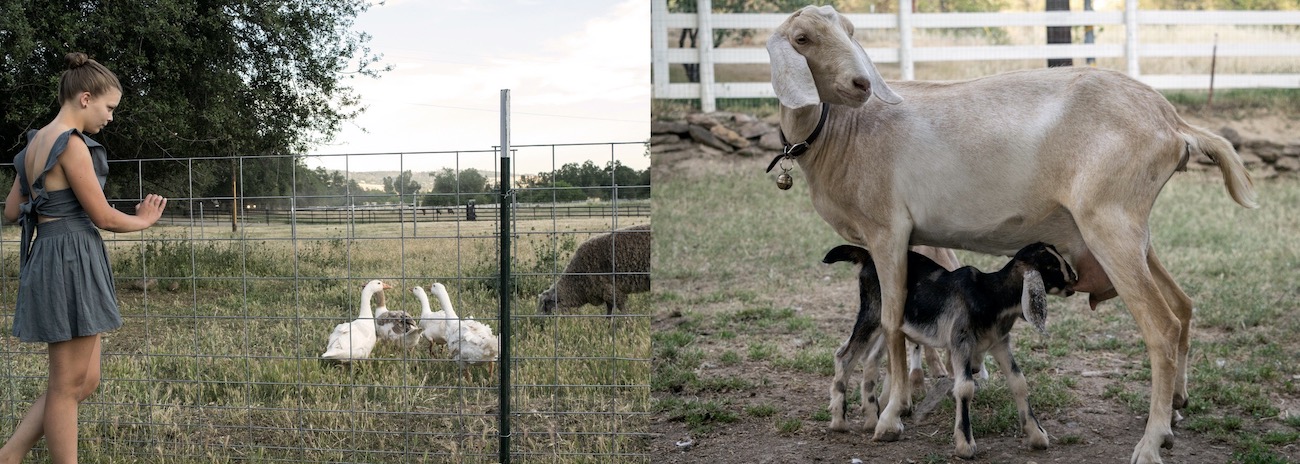
Getting the Leicester Longwool fiber processed has been one of the many challenges Elizabeth has navigated as a new farmer. With a staple length of 6–12”, most mills aren’t equipped to handle this type of wool. “California is not a textile state, so they don’t know what to do with a lot of it,” references Elizabeth. “We have a gap with the long wool. Processing is more equipped for Merino and Rambouillet. This is basically the opposite of Merino wool.” Aiming to keep processing as local as possible, this year Milk & Honey 1860 was able to send their wool to Heart and Soul Spinnery in Penn Valley, CA.

For smaller-scale processing, they can work directly from home. After teaching himself to hand spin through YouTube tutorials, Elizabeth’s eldest son Aidan now spins a portion of their wool on-site. This yarn is then knit into Milk & Honey 1860’s washcloths, which are Fibershed certified as 100% locally grown and made. The final step of processing happens literally in the customer’s hands; after a few uses, the washcloth felts becoming more dense and durable.
For a lot of Milk & Honey 1860’s customers, this is a subtle learning experience. “A lot of people hear ‘felt’ and think of the fabric they can buy,” Elizabeth says. “You know in those Pantene commercial, they show you all of those scales on your hair. That’s what wool is like.” By using this familiar example, Elizabeth is able to paint a tangible picture for her customers of the wool’s structure and why felting occurs. Both the price point for this product and the opportunity to learn are key. “That is how we’ll make measurable change in the state of California in the textile industry,” Elizabeth passionately states. “It has to work. You have to be able to make money with it and it has to be the whole picture.”
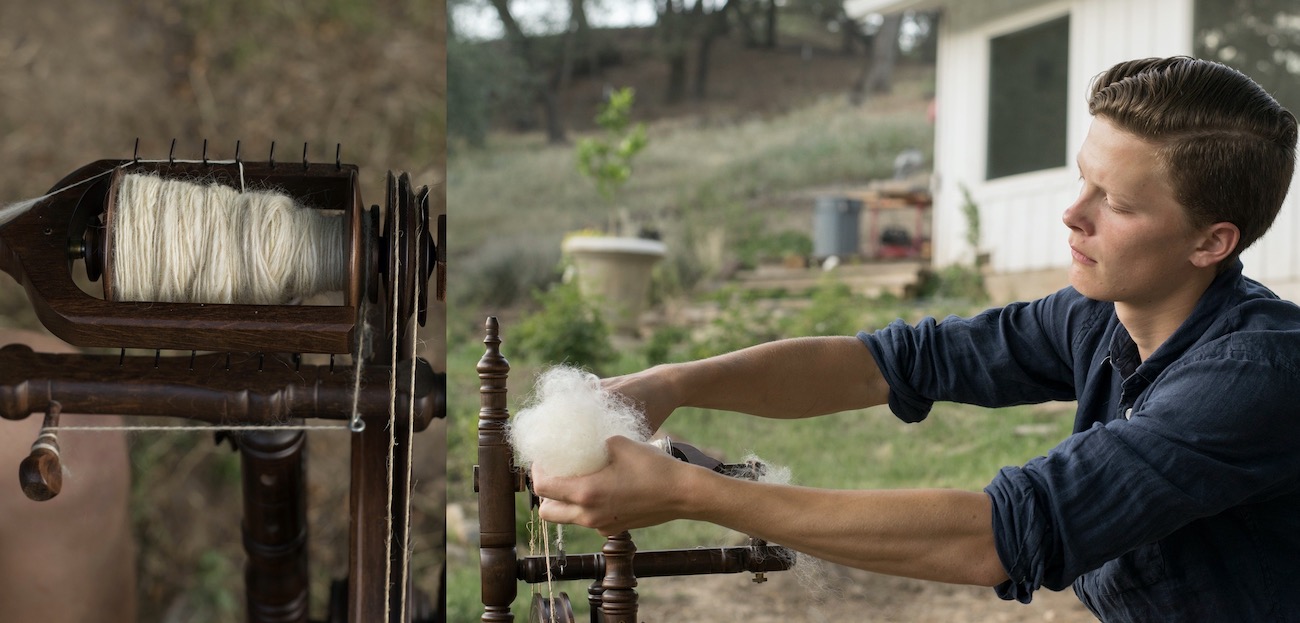
For Milk & Honey 1860 to support itself and its animals, fiber is actually a small portion of their income. Their main business is making and selling artisanal skincare products created from the milk of their dairy goats. Elizabeth likes to describe the circumstances as “we accidentally started a farm which accidentally started a business”. When they first bought the property the weeds were so tall that instead of buying the Jersey cow she had been saving for, Elizabeth bought goats to graze a firebreak. That Christmas, they used the goats’ milk to make soap for their friends and family with the warning that “if the soap sucks, throw it away”. Instead, people started asking for more. Now their on-farm shop (a rock cellar converted to a small farm stand) and online store carry a selection of soaps, lotions, shampoo bars, and lip balms. By choosing to become full-time partners, the three eldest children, Aidan, Isabella, and Sofia have supported the organic growth of this business. All three of them, along with Elizabeth, milk the goats, process the products in their kitchen, then package, market, sell, and ship. Together they strive to hold their products to the high standards of ethically and locally sourced ingredients without sacrificing quality.

As it turned out, the goats did accomplish that initial goal of creating defensible space. In late 2018, the Camp Fire devastatingly swept through Paradise and Butte Valley. When the call came to evacuate, it was immediate. The Larsons drove away leaving their animals to shelter in place and not knowing whether they would have a home to come back to. As it turned out, the property was mostly spared, with just spring water holding tanks being destroyed. Reflecting on the crisis Elizabeth said: “It made me just that much more grateful. When we came home and realized the fire hadn’t gotten the house, we immediately gave away half of our products to people who were evacuated and continued to give out product to everyone we saw working the fire. We were spared and that hit me very hard. Dear friends weren’t spared, but people really pulled together. The humanity and the love that happened changed me.”

The wildfire was an extreme on the spectrum of experiences and responsibilities Elizabeth balances on a weekly and daily basis. Juggling land management, animal husbandry, homeschooling her children, and running multiple businesses plus the daily problems that inevitably arise like water supplies running low or livestock predation, have meant that “I am learning and I don’t stop learning,” as Elizabeth says. “In other situations, you can solve things later, but with farming, it can’t. It needs to happen now.” Seeing what that has shaped in her and her family is one of many rewards the land has offered. “I love what it has developed in us.”
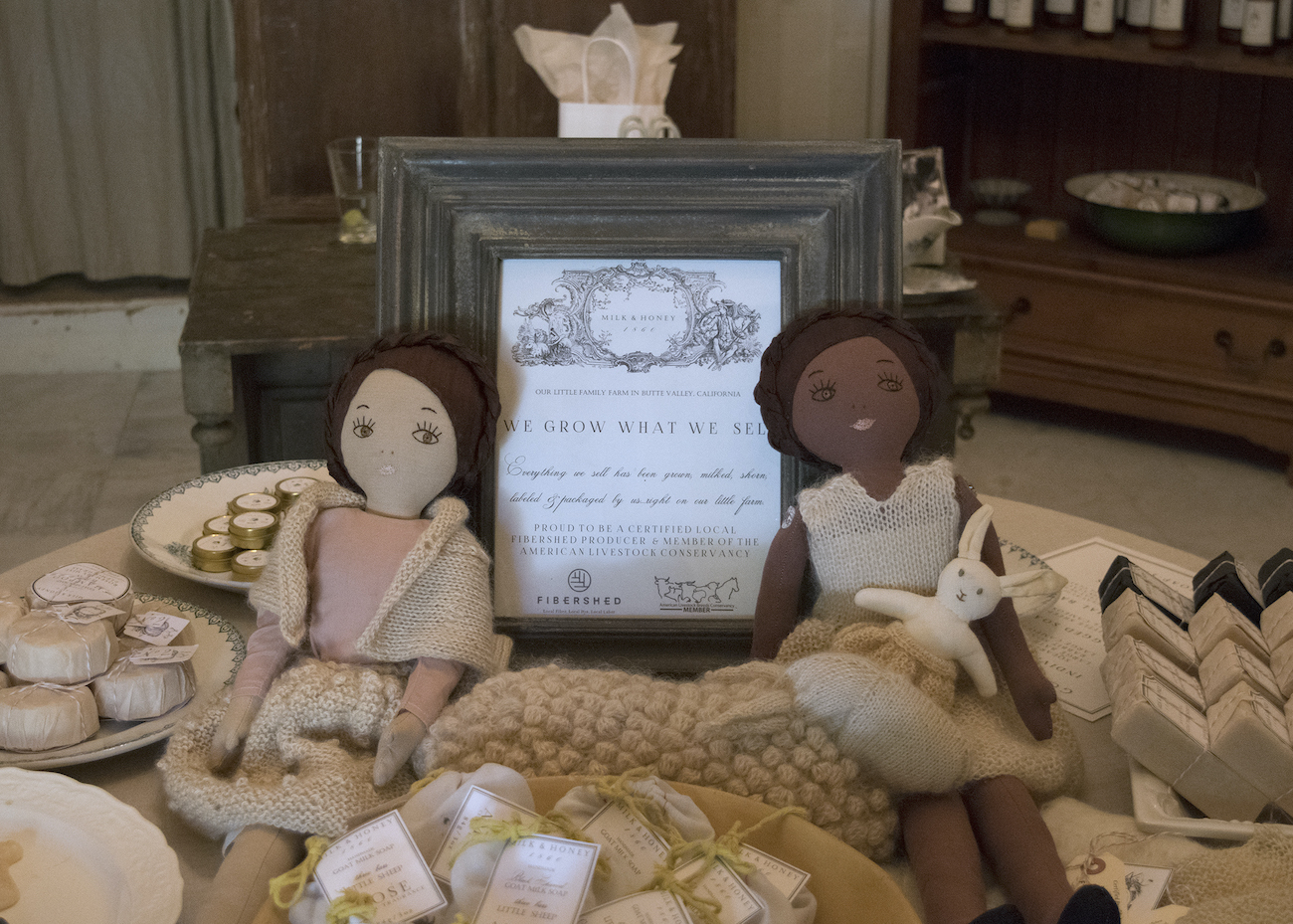
To learn more about Milk & Honey 1860 and to shop for their line of products, you can follow them on Instagram or visit their website.
